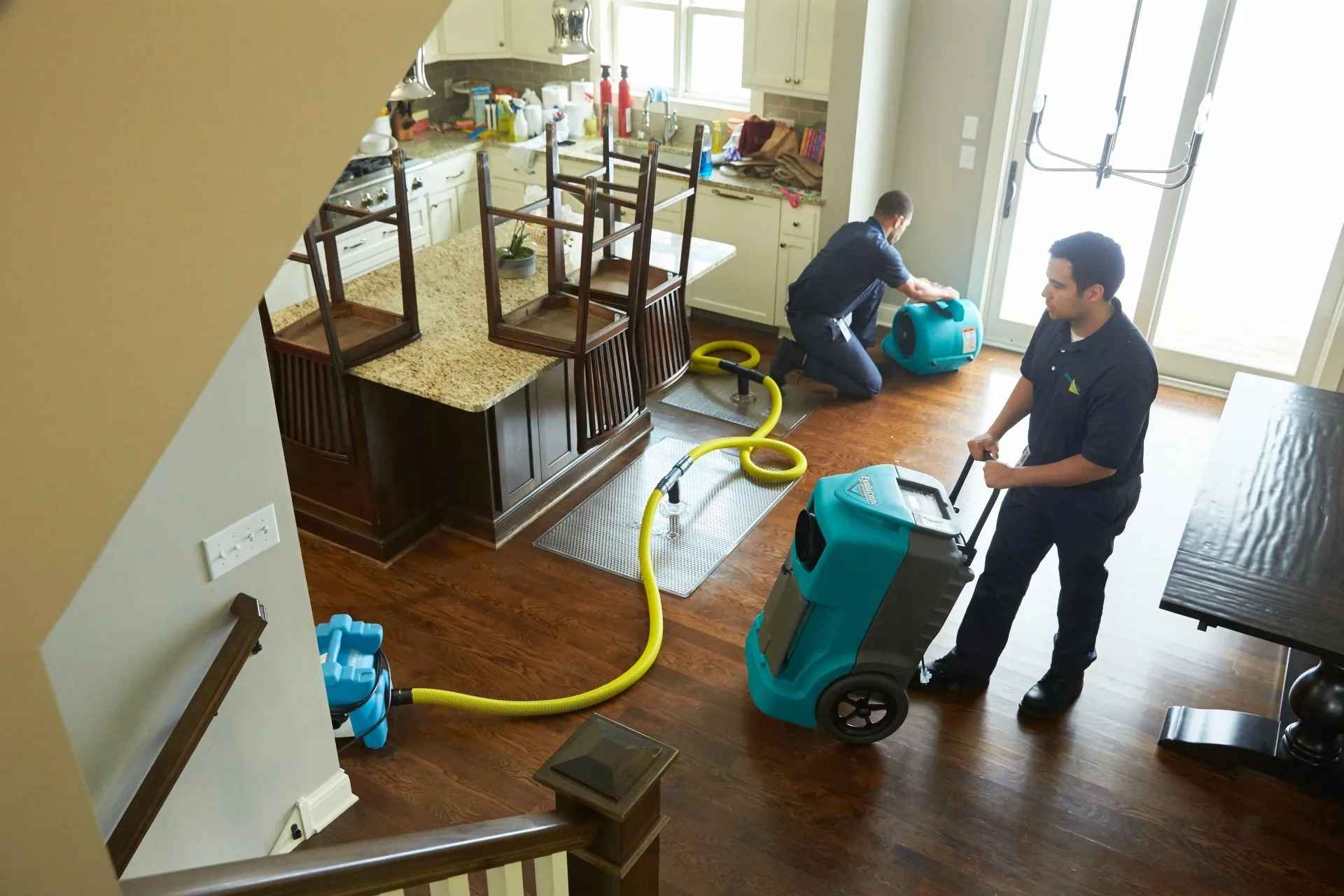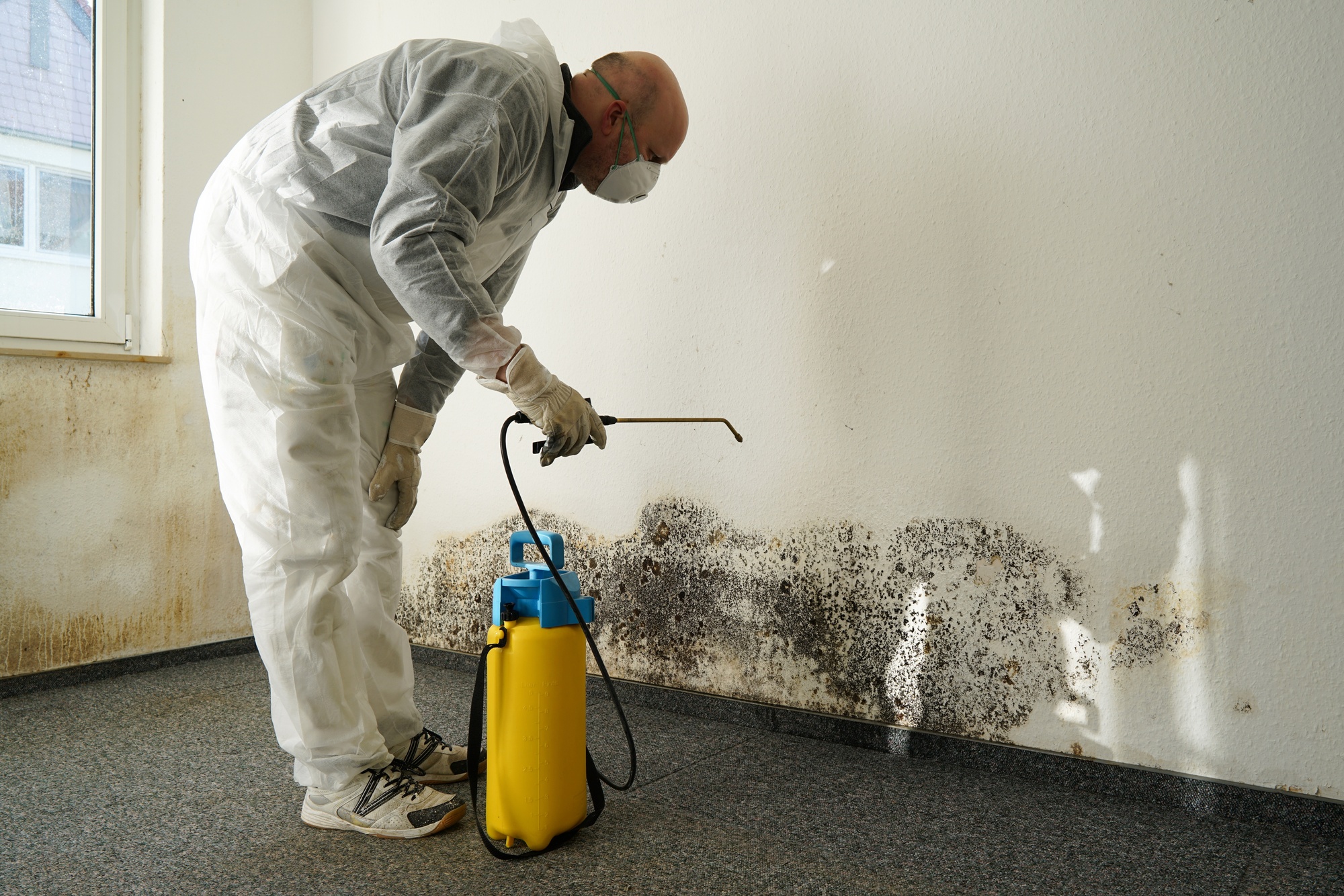Water Damage Restoration 101: Understanding the Process and Expense
Water damage can strike unexpectedly, leaving home owners in a state of complication. Understanding the reconstruction process is necessary for efficient recuperation. From assessing the damage to selecting the appropriate solution provider, each step influences the general result and cost. Elements such as the type of water damage and urgency also play a substantial duty. What are the particular techniques made use of in restoration, and how can one prepare for prospective expenses?
Kinds of Water Damage

Initial Analysis and Inspection

Water Extraction Techniques
Adhering to the preliminary evaluation, efficient water extraction techniques are utilized to mitigate damage and stop further concerns. These techniques entail using specialized devices such as submersible pumps and industrial-grade vacuum cleaners - Water Damage Restoration. The selection of technique depends on the quantity of water present and the kind of materials affected. For standing water, completely submersible pumps are generally made use of for fast removal, while vacuum cleaners are suitable for drawing out water from carpets and upholstery. In addition, progressed techniques like water removal mats may be utilized for hard-to-reach locations - Flood Cleanup Services. The goal is to remove as much water as possible, minimizing the capacity for mold and mildew development and architectural damage. Motivate and reliable water extraction is important in the total water damage repair process
Drying and Dehumidification Process
As soon as the water extraction is total, the drying out and dehumidification process comes to be important to restoring the afflicted location. This stage typically uses industrial-grade dehumidifiers and air moving companies to successfully lower dampness degrees. The dehumidifiers reel in damp air, getting rid of excess moisture, while air movers distribute air to increase evaporation. Tracking devices is often utilized to track humidity and temperature level degrees, making certain ideal drying out problems. The duration of this process can differ depending upon the degree of the water damage and environmental aspects. It is necessary to completely completely dry all influenced products, consisting of wall surfaces, floor covering, and furnishings, to avoid mold and mildew development and architectural damage. Correct implementation of this action is vital for an effective reconstruction end result.
Cleansing and Sanitizing Affected Locations
Once the drying procedure is total, a complete preliminary evaluation and assessment of influenced locations is crucial to recognize contamination degrees. Reliable cleansing methods and suitable products should after that be employed to remove particles and discolorations. Lastly, sanitization and sanitation techniques are necessary to ensure that damaging virus are removed, bring back the space to a safe condition
First Evaluation and Inspection
Prior to beginning any type of restoration initiatives, a complete initial analysis and examination of the influenced areas are important for effective cleaning and sanitizing. This procedure involves determining the level of water damage, identifying the source of the water invasion, and examining the products influenced. Inspectors usually seek signs of mold development, architectural honesty problems, and harmed valuables. The analysis likewise consists of checking wetness levels utilizing specialized devices to assure no covert water pockets stay, as these can lead to additional issues. Documenting the findings is important for preparing the following steps in the reconstruction procedure. A detailed first assessment allows reconstruction specialists to develop a targeted technique for reliable cleansing and sterilizing, eventually reducing damage and health threats.
Cleaning Up Techniques and Products
Effective cleaning and disinfecting of water-damaged areas require a selection of methods and products tailored to the details materials impacted. For porous surfaces like drywall and carpets, removal approaches are necessary to eliminate excess wetness, complied with by deep cleaning with specialized detergents. Non-porous materials such as ceramic tile or steel can be cleansed making use of commercial-grade cleansers that effectively eliminate contaminants. Steam cleansing is another reliable technique, specifically for carpetings and furniture, as it utilizes high temperatures to eliminate microorganisms and Water Damage Restoration mold and mildew (Flood Cleanup Services). In addition, environment-friendly products are progressively popular for their safety and security and efficiency - Water Extraction And Drying. Inevitably, picking the appropriate cleansing approaches and items not only guarantees prompt cleanliness however also help in avoiding further damage and carcinogen connected with water invasion
Sanitization and Disinfection Techniques
When addressing water damage, appropriate sanitization and sanitation methods are essential to ensure the safety and wellness of the damaged environment. After initial cleaning, surfaces must be treated with ideal disinfectants to remove virus, mold and mildew, and bacteria that flourish in moist problems. Usual approaches consist of making use of EPA-approved chemical disinfectants, which can be applied with spraying or cleaning strategies. Additionally, ultraviolet (UV) light systems can successfully disinfect locations by neutralizing bacteria without rough chemicals. The selection of method frequently depends upon the type of materials impacted and the degree of contamination. Ultimately, extensive sanitization not only restores a safe home but also assists protect against future health risks connected with sticking around wetness and mold and mildew growth.

Repair Work and Restoration Options
Examining the damage triggered by water direct exposure is essential for determining the suitable repair services and reconstruction options. Homeowners may deal with different concerns, consisting of harmed drywall, distorted flooring, and compromised structural elements. Depending on the extent of the damage, repair work may include replacing sections of drywall, installing new flooring, or reinforcing structural beams. In cases of extreme damage, total replacement of damaged materials could be essential. Additionally, professional conservators frequently recommend using wetness meters to analyze hidden wetness levels before choosing the most effective strategy. It is essential to act promptly to avoid mold growth and more degeneration. Choosing the appropriate choices not just brings back the residential or commercial property yet likewise guarantees long-lasting safety and performance.
Factors Affecting Restoration Prices

The degree of water damage straight influences the restoration costs house owners can anticipate to incur. Factors such as the source of the water, the duration of exposure, and the afflicted products substantially influence prices. For circumstances, clean water damage from a damaged pipeline is typically much less pricey to restore contrasted to damage triggered by sewage. Furthermore, the degree of contamination determines the requirement for specialized cleansing and disposal services, further enhancing costs. Geographic location also contributes, as regional labor rates and availability of restoration solutions can differ. The urgency of the reaction impacts prices; quicker treatments generally lead to lower total costs by stopping additional damage. Recognizing these variables is crucial for home owners when approximating remediation prices.
The three primary kinds of water damage are categorized based on contamination degrees: clean water, gray water, and black water. A thorough initial analysis and inspection are important steps in the water damage restoration procedure. For standing water, submersible pumps are generally made use of for fast removal, while vacuum cleaners are suitable for extracting water from carpetings and upholstery. The level of water damage directly impacts the reconstruction costs homeowners can expect to sustain. Clean water damage from a busted pipe is usually less expensive to restore compared to damage caused by sewer.